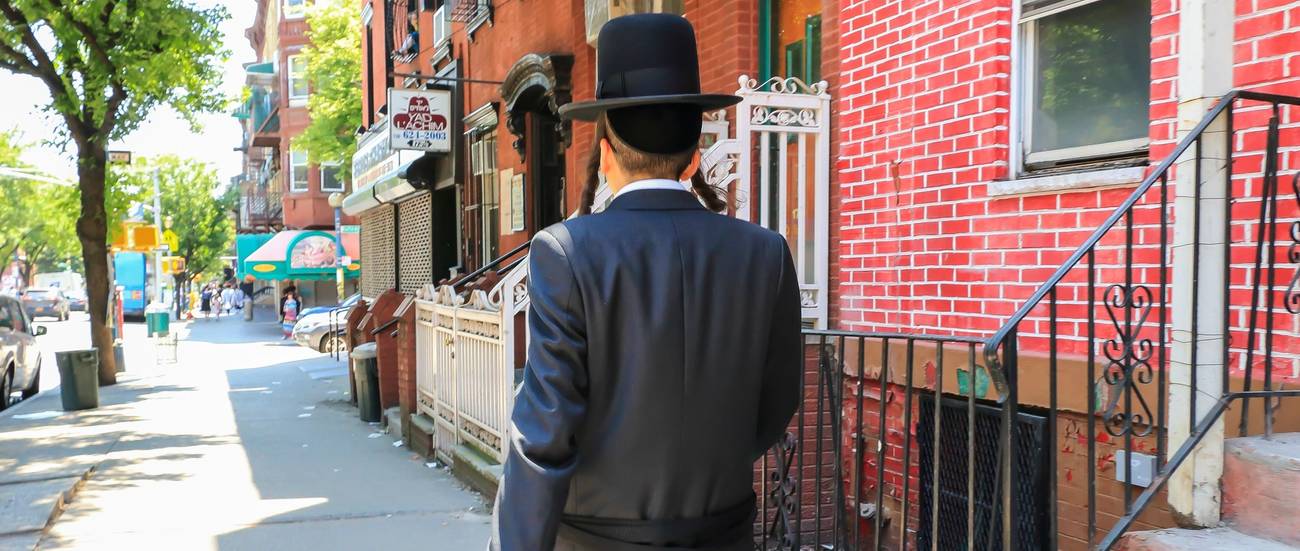Philip Roth and the Art of Belonging
For an Orthodox kid yearning to be accepted by the big world outside, the late novelist lit the way




Growing up Orthodox, I never really identified with the Jewish American experience. Outside our community, it seems, was a whole new world I knew little about. We had synagogue and prayers and tefilin, they had bagels and lox. And I might’ve never developed much of a taste for my fellow Jews outside my world had it not been for a film adaptation of Philip Roth’s work.
When the credits rolled on Indignation, my two ultra-orthodox friends laughed giddily. I sat motionless, because Roth touched upon something deep seated that I’ve always felt.
Roth and his characters were secular Jews. Despite that, he gave words to this nameless urge to just fit in, to be not an American Jewish writer—Feh!—but an American writer, full stop. I, too, harbored those ambitions.
I needed to be seen as a man in full by the American world, not as just another nebbishy religious Jew. I had a deep, often suppressed, secret desire to be welcomed by the wider universe of what appeared to be foreign people. This hunger informed my dress, my behavior, even my speech. If I could only pass as a non-Jew, I would be happy. If I could only conceal my yarmulke, I’d be a little more settled. If my beard could pass as a hipster scruff, I’d be in the clear. But my public displays of Jewishness—even in New York City—always betrayed me.
But from Roth I also learned that the desire for acceptance was never without its built-in shame. As much as I found comfort in his characters, I also found them cloying, maybe because I found my own attempt to pretend to be something I wasn’t deeply problematic.
I remember my first pair of jeans at 21, which hid in my closet for nine months. The Uniqlo saleswoman laughed after I admitted that I was clueless about the denim universe. She led me to the jeans section, waiting patiently while I scoped out different styles. We eventually settled on a pair. The paper bag sat on the floor of my closet till it was absolutely necessary, the first day of freshman year. When I wore them, I felt an odd power. I was proud, headed to a non-Jewish college, wearing non-Jewish pants. I was in. I was a Philip Roth character.
Later, I learned that they were women’s jeans. That foray into passing as a non-Jewish student failed. The world that I sought fell just beyond my grasp. Again, just like something out of Philip Roth.
Take, for example, Marcus Messner, the protagonist of Indignation. He has two goals: To become valedictorian, and “to have intercourse before I died.” He succeeds at the latter, meeting a woman in college. They meet for an intimate encounter in a cemetery, because he had to kill a part of himself to get to this point. But never mind: The intercourse he truly seeks isn’t just with a woman but with the world around him.
I felt the same way every day of my freshman year. Often, in my mind, I’d walk around pretending I was Messner. It helped me fit in, make sense of a world that, for most of my life, was foreign to me. Once, for example, I was on the subway, reading over a woman’s shoulder after becoming bored with my book and myself. She was on a Kindle, and I recognized some passages, so I asked about them.
“Excuse me,” I said. “Is that Going Clear?”
She responded. “Oh, it’s the other book about Scientology. But I did read Going Clear.”
“Is it any good?”
“Oh, it’s amazing. That stuff is crazy. They’re really evil.”
“Yea.”
She paused.
“You aren’t a Scientologist, are you?”
Then she glanced up at the back of my head. “Oh, I just noticed your yarmulke and realized you’re Jewish. I’m so sorry.”
She looked down in embarrassment, but she didn’t realize that I was euphoric. For the briefest of moments, I had passed as a non-Jew.
I feared that every person will see my every action through the lens of my Jewishness. That my religious identity would color how other people see me. That they would never see anything past that. My behavior is still all in reaction to this. The rolled up jeans. The New Yorker tote bag. The casual moving back of my skullcap now and then, hoping no one would notice it. Or, maybe, the second thing they notice. But if you’ve read Roth, especially later Roth, you know that It never works. People always notice. It’s a constant struggle that always fails.
The woman on the subway apologized, but I didn’t mind in the least. She saw past the most obvious thing about me. For the briefest of moment, she saw me for me.
Roth did, too. I still don’t know if I identify with the American Jewish experience writ large, but in Roth I found a guide to an experience even more acutely pressing: My own.
Eli Reiter is an educator and graduate student at the University of Chicago. His writing has appeared in the New York Times, Washington Post, and Slate, among other outlets. He is working on a book now. He can be found on Twitter at @AlreadyEli. You can read more of his work and contact him at elireiter.com.